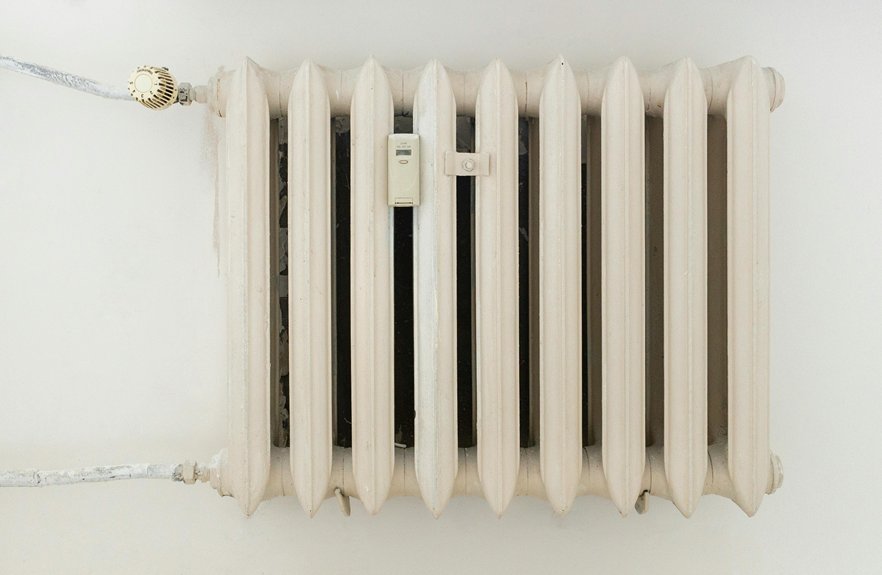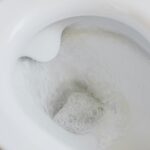As a homeowner, understanding safe water heater temperatures is essential for your family’s comfort and safety. Setting the right temperature can prevent scalding accidents, especially for children and seniors. It also helps you save money on energy bills and prolongs your water heater’s lifespan. But what’s the ideal temperature, and how can you ensure yours is set correctly? Let’s explore the crucial aspects of water heater temperature management.
Understanding Water Heater Temperature Settings
When you think about water heater temperature settings, you’ll want to find a balance between safety and comfort.
It’s crucial to understand that higher temperatures can lead to scalding risks, especially for children and older adults. Setting your water heater too low, however, may promote bacterial growth, particularly Legionella.
Most experts recommend a range between 120°F and 140°F for optimal safety and efficiency.
To adjust your settings, locate the thermostat on your heater, usually found near the bottom or side. Turning the dial can be straightforward, but make sure to check the temperature with a thermometer for accuracy.
Regularly monitoring and adjusting your water heater settings can help you maintain a safe and comfortable environment in your home.
Recommended Temperature for Residential Water Heaters
Finding the right temperature for your residential water heater can make a significant difference in both safety and energy efficiency.
The recommended setting is typically around 120°F (49°C). This temperature strikes a balance, providing sufficient heat for daily tasks like showering and dishwashing while reducing the risk of scalding.
It also minimizes energy consumption, helping you save on utility bills. If you have young children or elderly family members, maintaining this temperature is especially important for their safety.
You can easily adjust your water heater’s thermostat to reach this optimal setting. Regularly check the temperature with a thermometer to ensure it stays consistent, ensuring you enjoy hot water that’s both safe and efficient.
Risks of High Water Heater Temperatures
Setting your water heater to excessively high temperatures can lead to serious risks, both in terms of safety and efficiency.
First and foremost, you increase the potential for scalding injuries. Water that’s hotter than 120°F can cause burns in just a few seconds, especially for children and the elderly.
Additionally, high temperatures can strain your water heater, leading to premature wear and tear, which might result in costly repairs or replacements.
You’ll also notice higher energy bills as the system works harder to maintain these temperatures.
Lastly, the risk of mineral buildup increases, which can affect performance and efficiency.
Benefits of Lower Water Heater Temperatures
Lowering your water heater temperature can offer significant advantages for both safety and efficiency.
First and foremost, it reduces the risk of scalding, especially for children and the elderly. By setting your water heater to around 120°F, you can enjoy hot water without the danger of burns.
Additionally, lower temperatures help prevent the buildup of mineral deposits and corrosion, extending the lifespan of your water heater.
You’ll also notice lower energy bills, as heating water consumes a large portion of your energy usage.
This simple adjustment not only enhances your home’s safety but also promotes sustainability by conserving energy.
How to Safely Adjust Your Water Heater
Before you adjust your water heater, it’s important to ensure you’re taking the right steps for safety and efficiency.
Start by turning off the power or gas supply to your water heater to avoid any accidents. If you have an electric model, switch off the circuit breaker.
Next, locate the thermostat, which is usually found behind a panel on the unit. Use a screwdriver to remove the panel and access the thermostat knobs.
Adjust the temperature setting to a safe level, ideally around 120°F. Once you’ve made your adjustments, replace the panel securely and turn the power or gas back on.
Finally, wait a few hours to check the water temperature before using it, ensuring your adjustments are effective and safe.
Signs Your Water Heater Temperature Needs Adjustment
Have you noticed that your water isn’t as hot as it used to be or is scalding when you turn on the tap? These fluctuations can signal that your water heater temperature needs adjustment.
If your showers suddenly feel lukewarm or you run out of hot water faster than before, it’s time to take action. Conversely, if you’ve experienced burns or discomfort from the water being too hot, that’s a clear sign your temperature setting is too high.
Additionally, if you hear unusual noises from your water heater or notice a sudden spike in your energy bill, it’s worth investigating your temperature settings.
Addressing these signs can ensure your water heater operates safely and efficiently.
Energy Efficiency and Water Heater Settings
Adjusting your water heater temperature not only impacts comfort but also plays a significant role in energy efficiency. By setting your water heater to 120°F, you can significantly reduce energy consumption without sacrificing hot water availability.
This lower temperature minimizes heat loss and helps prevent scalding, making it a win-win for both safety and savings.
Additionally, each 10°F reduction can save you around 3-5% on your energy bill.
If you’re on a tight budget or looking to lower your carbon footprint, consider insulating your water heater and the first few feet of hot water pipes.
These simple adjustments can enhance efficiency and ensure you’re getting the most out of your water heater while keeping costs in check.
Maintenance Tips for Optimal Water Heater Performance
To ensure your water heater operates efficiently and lasts longer, regular maintenance is essential.
Start by checking the temperature setting; it should be around 120°F for safety and efficiency.
Flush the tank annually to remove sediment buildup, which can hinder performance.
Inspect the anode rod every few years and replace it if it’s corroded; this helps prevent rust.
Also, check for leaks and ensure the pressure relief valve is functioning properly.
Insulating your water heater and pipes can reduce energy loss.
Finally, keep an eye on the age of your unit; if it’s over 10 years, consider a replacement.
Conclusion
In summary, keeping your water heater at around 120°F not only ensures safe usage but also enhances energy efficiency and extends the life of your unit. By regularly checking and adjusting the temperature, you can minimize risks of scalding and enjoy comfortable hot water for daily tasks. Remember, a little maintenance goes a long way in keeping your water heater performing optimally. Stay proactive, and you’ll reap the benefits of a safe, efficient water heating system.

